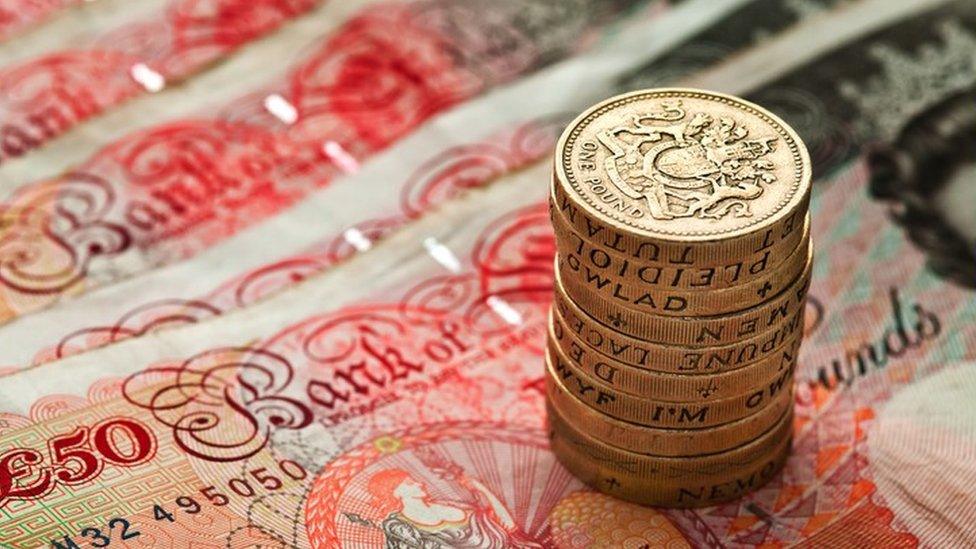Slow growth 'to weigh on Scotland's budget gap'
- Published

Scotland's government deficit is on track to remain at more than twice the maximum level required for EU membership, according to the Fraser of Allander Institute.
The gap between government taxation and spending is expected to be at 6% to 7% of the economy's total output by 2020.
That is a fall from 9.5% in the most recently published figures for 2015-16.
However, EU members - including those outside the eurozone - are expected to keep their deficits below 3% of GDP.
That is seen as the highest sustainable level of borrowing. After years of austerity, the UK has just reached that threshold.
Some existing EU members have been allowed to break the rule under special circumstances.
The regular forecast from the Strathclyde University economics unit foresees sluggish growth in output in Scotland for the next three years. Along with similar levels of government spending, that is the assumption that underlies the deficit forecast.
Growth during 2016 is reckoned to have been 1%, while the institute has raised its forecast for this year a notch, to 1.2% growth.
It estimates a 1.3% rise next year and forecasts 1.4% in 2019. In its forecast published last December, it said growth could rise to 1.6% two years from now.
That slight strengthening of growth this year, but at the expense of weakened expectations for subsequent years, is in line with the Office for Budget Responsibility forecasting for the whole of the UK. However, Scottish growth continues to underperform the UK overall.
The Fraser of Allander report also includes a forecast of rising unemployment, from a rate of 4.7% in the most recent figures for November to January, rising to 5% this year, 5.3% in 2018 and 6.1% the year after.
That represents a rise from 129,000 Scots seeking work to 166,000. It also forecasts a rise in the number of Scots in work by more than 70,000, to 2.5 million.
The document emphasises that the mid-range forecasts are as important as the wide range of possible outcomes, due to unprecedented uncertainty.
It claims that constitutional uncertainty around Brexit and a second Scottish independence referendum are "headwinds" for the economy, and that "the pattern of growth could be anything but smooth".
'Outlook fragile'
It said: "While positive, the outlook remains fragile and well below trend. The service sector will remain the dominant source of growth."
The report added: "There has arguably never been a time in recent history where the range of key fundamental economic policy questions facing Scotland have been so uncertain."
The Allander analysis reflects household spending having been strong in recent months, confounding economists' expectations of what would follow the 'leave' vote in the EU referendum last June.
However, there are expectations household spending will slow. The most recent Scottish government survey of consumer confidence has seen a sharp fall, and a much sharper fall for confidence in the economy more widely.
Wage inflation is slowing while price inflation is on the rise, driven partly by higher import prices since the pound weakened. On Tuesday, February inflation figures from the Office for National Statistics showed that both wage and price inflation stood at 2.3%.
- Published24 August 2016